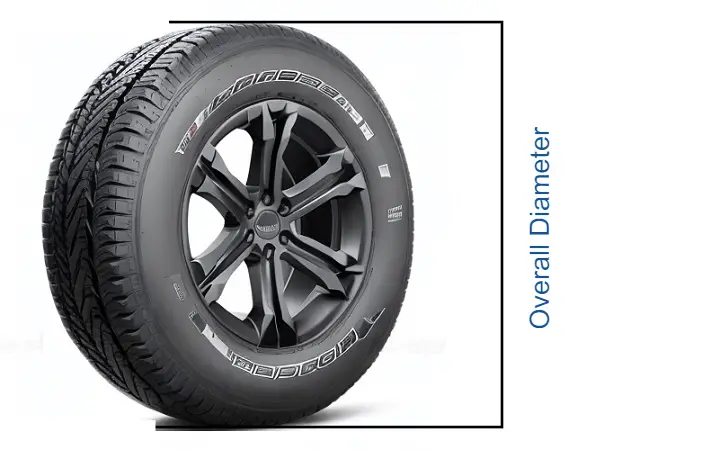Understanding Overall Tire Diameter

A tire’s overall diameter plays a crucial role in the performance, safety, and efficiency of a vehicle. In this article, we will explore the importance of overall tire diameter, the components of a tire, and how to calculate it.
We will also examine how changing tire diameter affects a vehicle’s performance and how to choose the correct tire diameter for your needs.
Components of a Tire
A tire is made up of several components that contribute to its overall diameter:
- Tread: The outermost layer of a tire, the tread provides traction and grip on various surfaces. The thickness of the tread will influence the tire’s overall diameter.
- Sidewall: The sidewall is part of the tire that connects the tread to the bead. It provides lateral stability and contains important information about the tire’s size and specifications. The height of the sidewall, also known as the aspect ratio, affects the overall diameter.
- Bead: The bead is the innermost part of the tire that connects to the wheel’s rim. It ensures a secure fit and maintains proper tire pressure. The diameter of the wheel itself is a crucial factor in determining the overall tire diameter.
- Inner liner: The inner liner is a rubber layer that acts as a barrier to prevent air from escaping the tire. It has a minimal effect on the overall tire diameter but is essential for maintaining proper tire pressure.
Calculating Overall Tire Diameter
The overall tire diameter can be calculated using the following formula:
Overall Diameter = (2 x (Section Width x Aspect Ratio / 100)) / 25.4 + Wheel Diameter
Section width is the tire’s width in millimeters, and the aspect ratio is the percentage of the section width that represents the sidewall’s height. Wheel diameter is measured in inches. Remember that 1 inch equals 25.4 millimeters to convert between inches and millimeters.
Suppose you have a tire with a section width of 225 millimeters, an aspect ratio of 50, and a wheel diameter of 17 inches. The overall tire diameter would be calculated as follows:
Overall Diameter = (2 x (225 x 50 / 100)) / 25.4 + 17 Overall Diameter ≈ 25.98 inches
Effects of Changing Tire Diameter
Altering a tire’s overall diameter can have several effects on a vehicle’s performance:
Vehicle Performance
- Acceleration: Larger diameter tires can negatively impact acceleration due to increased rotational mass and inertia.
- Braking: Increased tire diameter can affect braking performance, requiring more force to slow down the vehicle.
- Cornering: A larger tire diameter may improve cornering stability but can also reduce responsiveness.
- Fuel efficiency: Changing tire diameter can affect fuel efficiency, with larger diameter tires generally leading to increased rolling resistance and reduced fuel economy.
- Suspension and wheel well clearance: Increasing tire diameter may cause issues with suspension and wheel well clearance, potentially leading to rubbing and damage.
- Speedometer and odometer accuracy: A change in tire diameter can result in inaccurate speedometer and odometer readings, as these components are calibrated based on the original tire size.
Tire Diameter & Tire Selection
Choosing the correct tire diameter for your vehicle involves considering several factors:
- It is generally recommended to adhere to the factory-specified tire diameter to maintain optimal performance and avoid suspension, clearance, and component accuracy issues.
- For those looking to customize their vehicle’s appearance or performance, it is essential to consider the implications of changing tire diameter. Some modifications may necessitate changing tire diameter, such as installing larger wheels or adjusting suspension components. In such cases, it’s important to research and consults with professionals to ensure proper fitment and avoid potential issues.
Conclusion
Understanding overall tire diameter is essential for vehicle owners and enthusiasts alike. A tire’s components and specifications contribute to its overall diameter, which in turn impacts vehicle performance, safety, and efficiency.
When selecting new tires or making modifications, it’s crucial to consider the effects of changing tire diameter on your vehicle’s functionality and ensure proper fitment. By considering these factors, you can make informed decisions about tire selection and modifications, ultimately optimizing your vehicle’s performance and appearance while maintaining safety and efficiency.

